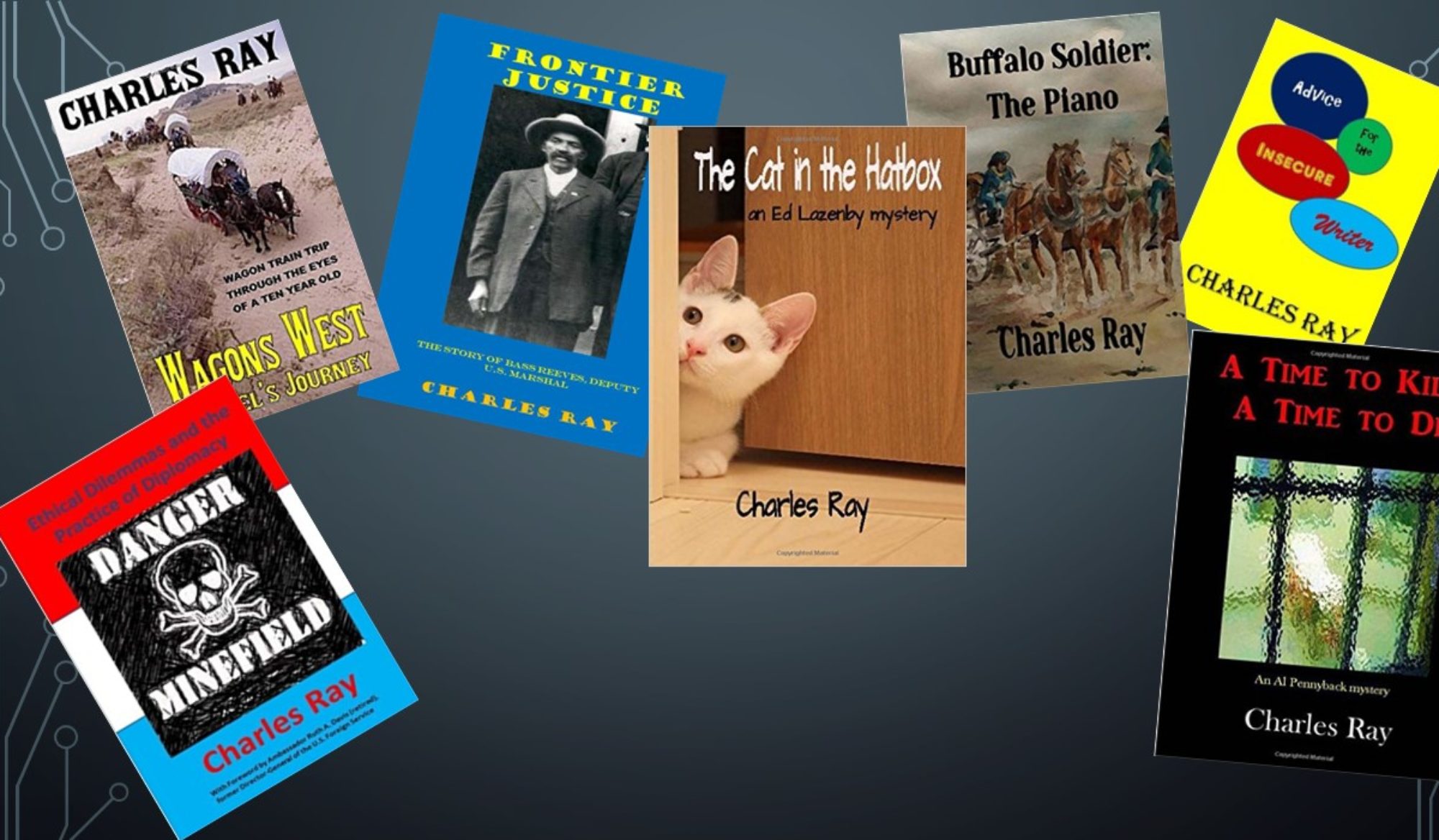I was honored to be the inaugural guest on Peter Alan Turner’s Dusty Saddle Roundup. To listen to Episode 1, follow this link: https://www.buzzsprout.com/1967405/10368596
Don’t follow the instruments

Karma Badge from Viewbug

Kat Meets Cowboys – Interview with Charles Ray

Check the following link for an interview I did for Dusty Saddle Publishing, an imprint of DS Productions. Tells all about how I got into writing and my writing techniques.
How stories evolve
A Writer’s Pledge

Where do your ideas come from?

PhotoShop Saves the Day
The photo processing utility PhotoShop often gets a bad rap because scam artists and hucksters use it to create fake photos that mislead or cheat people. But it’s just a tool and shouldn’t be blamed because some people misuse it. It can be a life saver in some circumstances. Like the time my nephew, Keith, needed new head shots for a film role he was auditioning for and asked if I would do them. I agreed, but since all my photo gear was destroyed when our house burned in March 2021, and I’ve only just begun to repurchase equipment, all I had was my DSLR camera, a few filters, and two lenses. He recently moved, and his lights, backdrops and other gear needed to do proper head shots was still in storage, we decided to make do with a large piece of brown cardboard and my camera’s internal flash. Most of the photos (especially those we took outdoors) came out okay, but some of the closeups had a harsh shadow and the texture of the cardboard glaringly apparent. To make sure the photos would pass muster, I decided that it was time to invest in some proper post processing software, so I bought and installed PhotoShop. A few hours of practice to get the feel of it, and then I tackled the offending shots. Below, see before and after shots to show just what this amazing software can do.


Ascendancy of Kakistocracy
American democracy is not dead, nor is it, as some have suggested, in danger of being replaced by a plutocracy, and certainly not an aristocracy—although, some high-level politicians act as if they are aristocrats. No, what is happening, I fear, is that our democracy is, before our very eyes, morphing into a kakistocracy. For those unfamiliar with the term, ‘kakistocracy’ is derived from the Greek words for ‘bad’ and ‘rule,’ and means, basically, ‘rule by the worst men (people) in the state.
If you don’t believe me, or if you take issue with this view, I support your right to that belief. After all, the Constitution protects every citizen’s right to believe whatever he or she wishes, and the right to express that belief—at least, it does so far. I will, though, tell you why I am of the belief that we are slowly coming under the suzerainty of the most base elements of our society, and that we only have ourselves to blame for this sad state of affairs.
Look at the way certain members of the American public and some politicians have reacted to the COVID-19 pandemic. Despite the weight of scientific evidence, you have many people who refused to believe the virus even exists and too many politicians willing to support this misguided belief. Then you have those who oppose wearing masks or getting vaccinated and, again, politicians clinging to these views either because they are as lacking in knowledge or, even worse, because they think it will win them votes.
The other evidence of the rise of the kakistocrats is the political support for climate change deniers. While I can understand the average person having difficulty with the concept—given the sorry state of our primary education system in many parts of the country and the growing mistrust in science or intellectuals this is bound to result in large numbers of uninformed—but the politicians who are unable to process the information that’s available to them, or who are so deep in the pockets of the corporations that make millions off fossil fuels and deforestation, and who promote climate change denialism or who refuse to support actions to save the planet are beneath contempt.
So, there’s no doubt in my mind that it’s not autocrats we have to fear. We have to fear the establishment of a dictatorship of fools, or author John Kennedy Toole’s A Confederacy of Dunces, published in 1981 through the efforts of writer Walker Percy eleven years after Toole’s suicide. Dunces is the story of a man who disdains modernity while enjoying it at the same time, and he attributes all of his failings to some higher power rather than his own feeble inadequacies. Toole is thought to have come up with the idea for the book from an epigram in Jonathan Swift’s essay Thoughts on Various Subjects, Moral and Diverting: “When a true genius appears in the world, you may know him by his sign, that the dunces are all in confederacy against him.” The modern-day dunces are the kakistocrats who are known not so much by what they do and think but by what they are against, and they seem to be against just about everything that is moral and meaningful. If it make sense, you can depend on them to take a stand against it.
And that, my dear friends, is what we truly have to fear.
A tale of two countries




